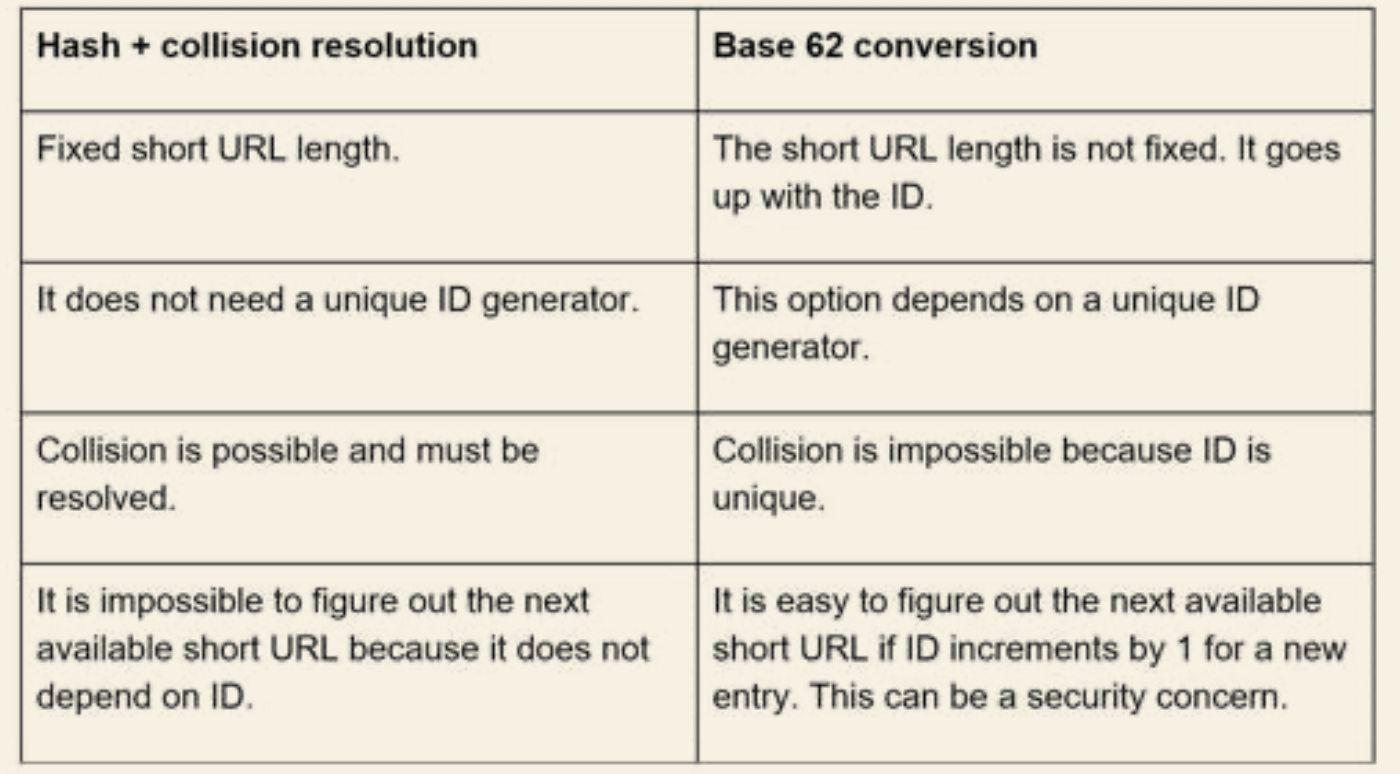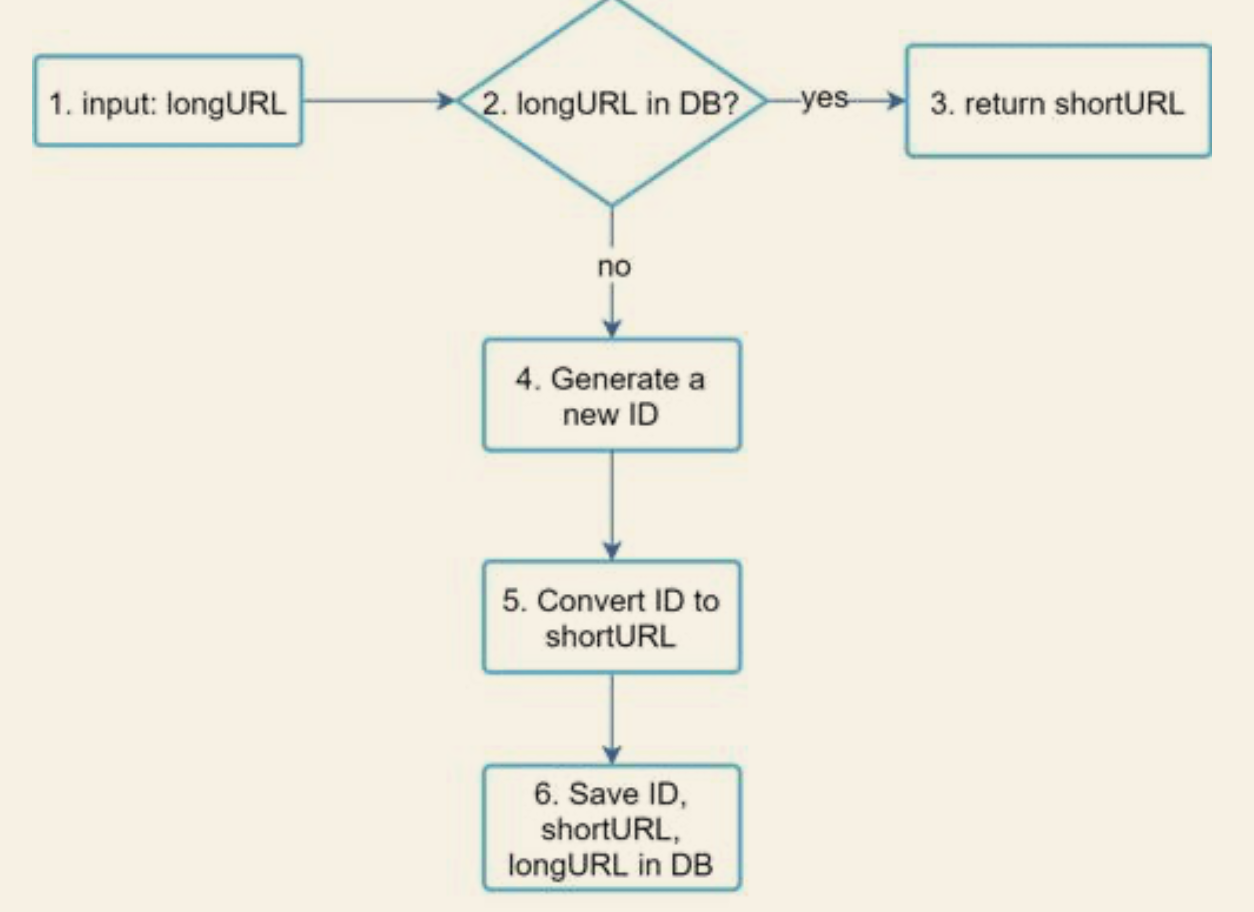Design a url shortener
Question
Step 1 - Understand the problem and establish design scope
Questions to ask
- Can you give an example of how a URL shortener work
- What is the traffic volume
- How long is the shortened URL
- What characters are allowed in the shortened URL?
- Can shortened URLs be deleted or updated?
Back of the envelope estimation
- Write operation: 100 million URL generated per day
- That is 1160 per second
- Read operation: 10:1
- Hence 11600 read per second
- Assume the service will run for 10 years
- 365 billion records
- Average URL length is 100
- 365 billion * 100 bytes
- 365 TB
TO CLARIFY
KB -> 1,000
MB -> 1,000,000
GB -> 1,000,000,000
TB -> 1,000,000,000,000
Step 2 - Propose high-level design and get buy-in
API Endpoints
POST api/v1/data/shorten
- request parameter: {longURL: longURLString}
- return shortURL
GET api/v1/shortUrl
- Return longURL for HTTP redirection
URL redirecting
- once the short URL inputted and received by the server, it changes to the long URL with 301 HTTP redirect
HTTP redirect
Hash function of 1 to 1 mapping
Step 3 - Design deep dive
Data model
- Since using in memory hash table is not feasible for real world system
- We can use relational database for such one to one mapping
Hash function
- 10 + 26 + 26 possible character values for all letter and numbers
- Hence need 7 digits (3.5 trillion) to hold all URLs
Collision
- Most common functions such as CRC32, MD5 or SHA-1 have more than 7 characters, hence we are only using the first seven
- However, this may introduce hash collision
- We can add predefined string to the long URL and re-hash if the URL already exist in the database
- However expensive to make multiple request to DB
- use bloom filter to improve
Base 62 conversion
- Or simply turn the ID of the url into another digit base to reduce the length

URL shortening deep dive

URL redirecting infrastructure

- Load balancer manages the incoming request
- If in cache, return immediately
- Else search the database
Step 4 - Wrap up
Topics to discuss
- Rate limiter to avoid malicious requests
- Web-server scaling - since stateless, hence easy to scale up
- Database scaling - replication and sharding
- Analytics - like the volume of clicks, when do they click...
- Availability, consistency and reliability